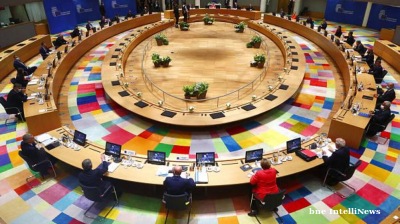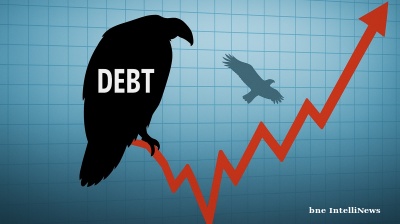Russia and Ukraine are both emerging from the coronacrisis and have had very similar experiences, but as the recovery gets under way Ukraine is beginning to close the gap with Russia.
Examining the two economies at first sight there seems little to compare, as that gap remains very big indeed. Russia dwarfs Ukraine in almost every way, but given its size it should be pulling ahead of Ukraine as some sort of normality returns and it is not – at least on some scores.
Digging a little deeper and Ukraine is actually outperforming Russia on income growth, industrial production growth and a few other counts, although direct comparisons have a limited validity due to the huge differences in the sizes of the two economies – Russia’s is more than 20 times larger and a lot more sophisticated.
As bne IntelliNews has reported, six years after the Euromaidan revolution it appears that Ukraine is finally starting to enjoy some of the benefits of the catch-up growth that most countries in the region finished a decade ago.
March marked the beginning of the end of the crisis in both countries. Most key sectors of the Russian economy posted year-on-year growth in March and the economy expanded by 0.5%. Industrial production went into the black for the first time in almost a year, increasing by 1.1% y/y. However, GDP contractions of around 2% in both January and February mean the first quarter in Russia was still negative.
The story was the same in Ukraine, with the economy contracting by 2.8% in January and February compared to the first two months of last year, according to the Ministry of Economic Development and Trade.
There is no Ukrainian GDP estimate for March yet, but like in Russia, industrial production went strongly back into the black that month, suggesting Ukraine is following a very similar path. Ukraine’s industrial output increased 2.1% y/y in March after a 4.6% y/y decline in February, the State Statistics Service reported on April 22.
Income
Consumption and demand have picked up in both Ukraine and Russia since the start of the year, but the situation with wages is very different.
Real wages in Ukraine rose 9.5% y/y in March, accelerating from 7.6% y/y growth in February, the State Statistics Service reported April 28. The average monthly nominal wage amounted to UAH13,612 ($490), increasing from UAH12,549 in February, or 6.7% month on month in real terms.
“The growth of real wages accelerated significantly in March even despite increasing inflation. Apparently, the improvement in industrial production prompted the wage growth,” Evgeniya Akhtyrko of Concorde Capital said in a note. “We expect real wages will rise 8-9% y/y in 2021. The growth of wages will be boosted by economic revival and rising demand for labour.”
In Russia real wages went down in March, extending six years of decaying real incomes. Real incomes were down 2.8% y/y in the first quarter and real disposable incomes (the money you have left to spend after paying for essentials and utilities) were down a painful 3.6% y/y, taking the income level to below the 2010 level – on paper, at least.
But the picture, especially in Russia, is muddied by the pandemic’s distortions that are already creeping into the statistics. At the same time, the surge in inflation in the first quarter is pulling down the real income numbers, which is an inflation-adjusted number.
“The fall in real incomes doesn't tally with the very strong growth in consumption,” says Iikka Korhonen, head of Bank of Finland Institute for Economies in Transition (BOFIT). “Household consumption is significantly up.”
Wages in Ukraine in dollar terms remain about half of those in Russia, which is the most prosperous economy of any country that did not join the EU after the collapse of the Soviet Union, but have been growing strongly in the last two years and closing the gap with Russian salaries.
Average income in January 2018 in Ukraine was $272 per month against Russia’s $679. Two years on, and in February the average wage in Ukraine has almost doubled to $490, whereas in Russia incomes are up only $10 over the last two years to $689.
The rising incomes in Ukraine are feeding into the retail sector, which is one of the big growth drivers, whereas Russia’s retail was going backwards in March.
Russia's retail trade fell 3.4% in March 2021 from a year earlier, following an upwardly revised 1.5% drop in the previous month and more than the expected 1.3% decrease.
In March, Ukraine’s retail sales boomed, up 11.8% y/y or 13.1% m/m, and were up 5% y/y in the first quarter of 2021, according to Ukrstat.
All in all, Ukraine’s retail sector has been outperforming that of Russia’s all of last year, but in March the two markets started to diverge as the rising Ukrainian wages continue to drive consumption faster than in Russia.
GIR
The biggest difference between the two countries is in the amount of money they have.
Russia managed to accumulate more than $100bn in the two years from the $450bn it had in January 2018, although gross international reserves (GIR) fell slightly from $586bn in February to $573bn in March, partly due to the revaluing of its gold reserves, which dropped from $130bn to $125bn over the same period as prices sank.
Russia has an enormous amount of money. The reserves are equivalent to more than two years of import cover, or enough to pay off its entire public and external debt and still have $100bn in cash left over, which is enough to ensure the stability of the ruble.
Ukraine has been building up its reserves too, which have grown by $10bn from the $18.4bn it had in January 2018 to $27bn it last reported in March – a comfortable amount.
The increase in reserves brings some welcome relief, as they are the equivalent of 4.3 months of import cover, above the three-month minimum needed to ensure a stable currency. When GIR was a mere $18bn the country was in constant danger of a debilitating currency crisis.
A rise of $100bn in reserves in the last two years is a 27.4% increase, but proportionately Ukraine has done even better and seen its reserves grow twice as fast, up by 46.6% over the same period.
Starting with less then just getting a little means a lot more. The state issued a $1.25bn Eurobond last week that had a noticeable impact on the reserves, whereas Russia can shrug off the net outflow of $3.2bn in January-March by non-resident investors from its local bonds without a second thought.
Ukraine’s low level of reserves also makes it dependent on the International Monetary Fund (IMF) $5bn stand-by agreement, of which it has only received $2.1bn last year. The country has to repay a total some $16bn in debt this year, which is equivalent to 60% of its entire reserves. Without access to the IMF funds and the international capital markets, if Ukraine tapped its reserves to pay this debt off it would only have $11bn left, or 1.8 months of import cover. That would certainly cause a major devaluation of the hryvnia and plunge the country into yet another crisis.
On the other hand, even a US ban on US investors buying and holding OFZ bonds would only lead to an outflow of around $10bn and have little effect. Moreover, Russia’s Ministry of Finance issues about RUB3 trillion ($40bn) of OFZ a year but has some RUB9.5 trillion of funds at its disposal from various sources. It could, if the “nuclear option” sanctions were rolled out, simple stop issuing OFZ entirely for three years before it started to run into problems.
Inflation
The central banks of both Russia and Ukraine have covered themselves in glory in their battle with inflation and have extremely similar conservative and competent managements. Where they differ is in their starting point and the stability of their markets.
The Central Bank of Russia (CBR) more or less defeated inflation in 2018 when the rate fell to a post-Soviet low of 2.3% – a result on a par with any developed market. CBR governor Elvira Nabiullina has been hailed as the “most conservative central banker in the world”, whereas the management at the National Bank of Ukraine (NBU) should be in the running for a similar title.
The NBU, on the other hand, was fighting against double-digit inflation that resulted from the collapse of the economy in 2015 following the Revolution of Dignity that saw the economy contract by 17% in a single quarter.
2019 was an annus mirabilis as Ukraine’s inflation tumbled by more than 6pp also to reach post-Soviet lows of under 2%. If anything, the NBU’s performance is far more impressive than Nabiullina’s, as inflation was not only contained; it was crushed. The regulator began slashing the prime interest rate by whole percentage points month after month.
The coronavirus (COVID-19) epidemic has been a tragedy for both countries that had solved their main macroeconomic problems and could have reasonably looked forward to half a decade of growth and prosperity, but from about January inflation began to surge.
The NBU went first and hiked rates in March (50bp) and then again in April (100bp). The CBR was only a few weeks behind and did the same with hikes in March (25bp) and April (50bp). As the charts show, the NBU’s more dramatic decisions are a result of its bigger problem.
As this inflation is not caused by monetary factors but things like food price rises and the pass-through from last year’s devaluations the rate hikes are anticipated to have only a limited impact on inflation, so more rate hikes are expected.
Data

Belarus reports modest GDP growth 1.6% in 8M25
Belarus’ economy expanded by 1.6% in the period from January to August 2025, according to preliminary estimates from the National Statistical Committee, state news agency BelTA reported on 17 September.

Most Ukrainians reject Russian peace plan, back continued resistance, poll shows
An overwhelming majority of Ukrainians remain committed to resisting Russia’s invasion and reject Moscow’s latest peace proposals, even as many recognise that the war is unlikely to end soon, according to a new survey by the KIIS.

Young Bulgarians turn to stocks over real estate, survey shows
Real estate remains the most popular option overall but younger investors are leading a shift towards stock market investing, says survey commissioned by Revolut.

State of global democracy - Statista
The Economist Democracy Index rates countries on the state of their governing system each year. In the latest edition, corresponding to the year 2024, only 25 countries (6.6% of the world's population) have been rated as "full democracies"



